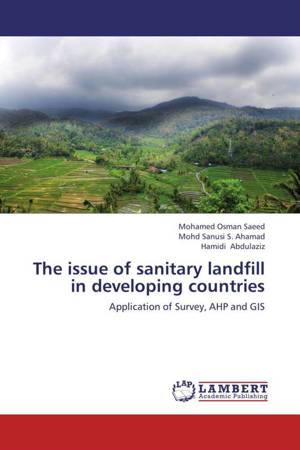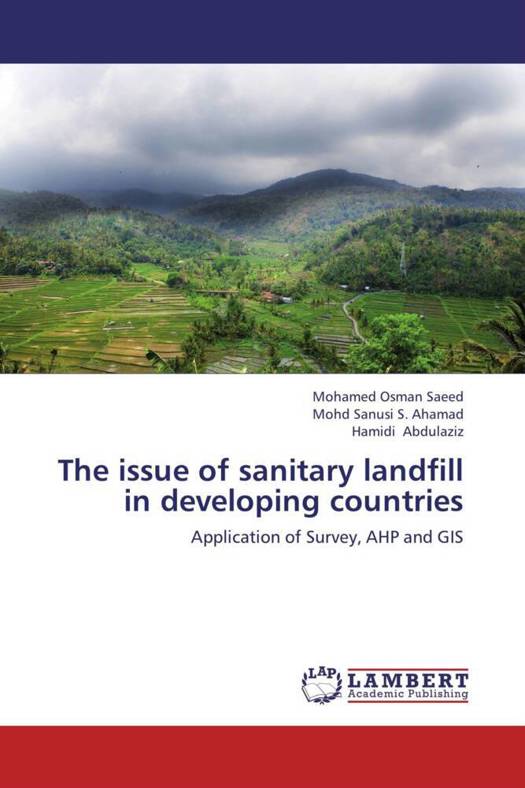
- Afhalen na 1 uur in een winkel met voorraad
- Gratis thuislevering in België vanaf € 30
- Ruim aanbod met 7 miljoen producten
- Afhalen na 1 uur in een winkel met voorraad
- Gratis thuislevering in België vanaf € 30
- Ruim aanbod met 7 miljoen producten
Zoeken
The issue of sanitary landfill in developing countries
Application of Survey, AHP and GIS
Mohamed Osman Saeed, Mohd Sanusi S. Ahamad, Hamidi Abdulaziz
Paperback | Engels
€ 93,45
+ 186 punten
Omschrijving
Selection of sanitary landfill site is a key for urban planning and development. Although there are international guidelines from World Health Organization (WHO) and World Bank (WB) regarding the selection of landfill, however most of the developing countries are not adhering to it because of financial constraint, political intervention and public awareness. The primary goal of this book is to evaluate the aspects of landfill site using direct feedback from local decision makers (DMs) of landfill management communities in Malaysia. The current research highlights the problems associated with selecting sanitary landfill and presents solutions to overcome them. The surveyed result has been analyzed using predictive analysis software (PASW; previously SPSS), expert choice (EC) and geographic information system (GIS). The ANOVA result indicates that there is no significant difference between the five groups (P>0.938), and this result has a strong correlation with the GIS mapping results which shows that most of the suitable areas are located at northern Seberang Perai Selatan
Specificaties
Betrokkenen
- Auteur(s):
- Uitgeverij:
Inhoud
- Aantal bladzijden:
- 340
- Taal:
- Engels
Eigenschappen
- Productcode (EAN):
- 9783659192821
- Verschijningsdatum:
- 27/07/2012
- Uitvoering:
- Paperback
- Afmetingen:
- 150 mm x 220 mm
- Gewicht:
- 467 g

Alleen bij Standaard Boekhandel
+ 186 punten op je klantenkaart van Standaard Boekhandel
Beoordelingen
We publiceren alleen reviews die voldoen aan de voorwaarden voor reviews. Bekijk onze voorwaarden voor reviews.








